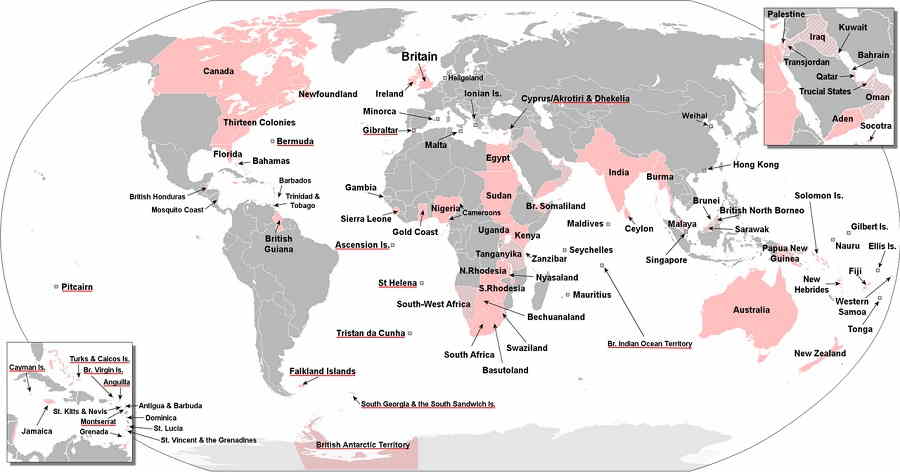
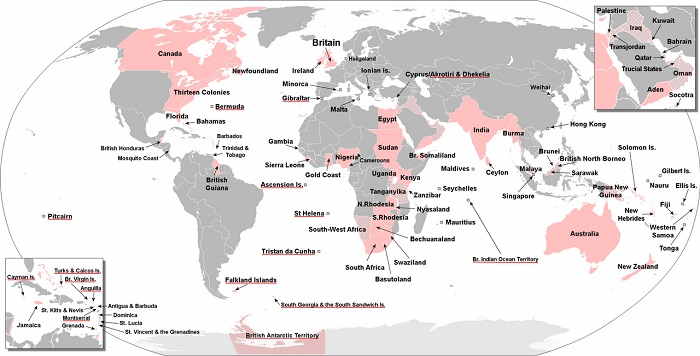
The British Empire was the largest empire in history, consisting of colonies, protectorates, and other territories ruled by the United Kingdom. At its height, the British Empire encompassed a quarter of the world's population and covered a quarter of the Earth's total land area. The British Empire began in the 16th century when the first British colonies were established in North America. The colonial empire was expanded in the 17th and 18th centuries, with additional territories in the Caribbean, India, and Australia. The 19th century saw the height of the British Empire, with further expansion into South Africa and parts of Asia and the Middle East.
The British Empire was an economic powerhouse and a major force in world affairs. It was responsible for the spread of the English language, the British parliamentary system, and the development of a global trading system. The Empire also had a profound effect on culture, with European customs, traditions, and language being adopted in the colonies. The British Empire was often criticized for its exploitative nature, with colonial administrators often profiting from the resources of the colonies they were supposed to be governing. This exploitation caused resentment among the colonized peoples, leading to numerous uprisings and rebellions, some of which were successful. The 20th century saw the decline of the British Empire as independence movements spread across the world. Despite its controversial history, the British Empire had a lasting impact on the world, with its legacy still visible in the countries and cultures it left behind.
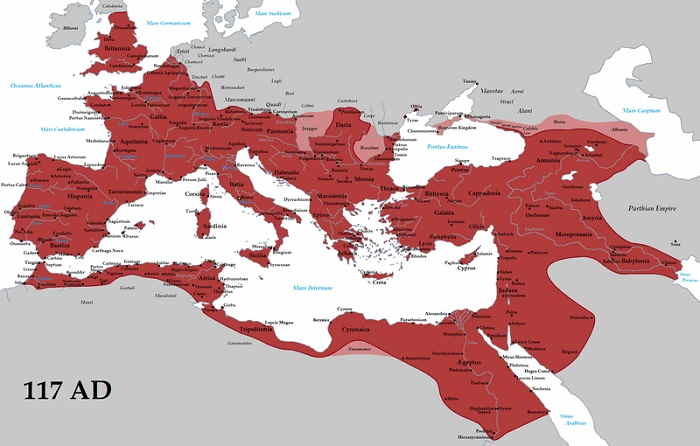
The Roman Empire stands as one of the most influential and enduring civilizations in human history. Its colossal footprint, spanning over 500 years and three continents, left an indelible mark on the world, shaping the course of history in ways that continue to resonate today. Founded in 27 BC, the Roman Empire emerged from the ashes of the Roman Republic, consolidating power under the leadership of Augustus Caesar, the first Emperor of Rome. What followed was a period of unprecedented expansion, with Roman legions conquering vast territories from Britannia to Egypt, from Hispania to Mesopotamia. The Roman Empire's military prowess and engineering genius allowed it to maintain control over these territories for centuries.
Roman governance was characterized by a complex administrative system that incorporated elements of democracy and autocracy. The Senate, though often symbolic, played a role in decision-making, while emperors held ultimate authority. This blend of governance allowed Rome to adapt to diverse cultures within its borders, fostering a sense of Romanization and cultural exchange. The Roman Empire's contributions to law, politics, and engineering were monumental. The Roman legal system, with its principles of equity and justice, laid the foundation for modern legal codes. Innovations in architecture and engineering, such as aqueducts, roads, and the Colosseum, showcased Roman engineering expertise and remain marvels of human ingenuity. The Romans' cultural achievements left an enduring legacy. Latin, the precursor to the Romance languages, spread throughout the empire. Roman literature, exemplified by figures like Virgil and Cicero, continues to be studied and revered. Moreover, Christianity, which emerged within the Roman Empire, went on to become one of the world's major religions, leaving an enduring spiritual legacy.
Economic prosperity was a hallmark of the Roman Empire. A vast network of trade routes facilitated the exchange of goods, ideas, and culture. Rome's currency, the denarius, became a symbol of economic stability and the foundation for modern monetary systems. However, despite its grandeur, the Roman Empire was not impervious to decline. Internal strife, economic troubles, and external pressures contributed to its gradual disintegration. In 476 AD, the western half of the empire fell to Germanic tribes, marking the traditional end of the Roman Empire. The Eastern Roman Empire, known as the Byzantine Empire, survived for nearly a millennium longer, preserving many aspects of Roman culture.
The Roman Empire's impact on the world is immeasurable. Its contributions to governance, law, architecture, language, and culture continue to shape the modern world. The Roman legacy serves as a testament to the enduring influence of a civilization that once ruled an empire that spanned the known world.
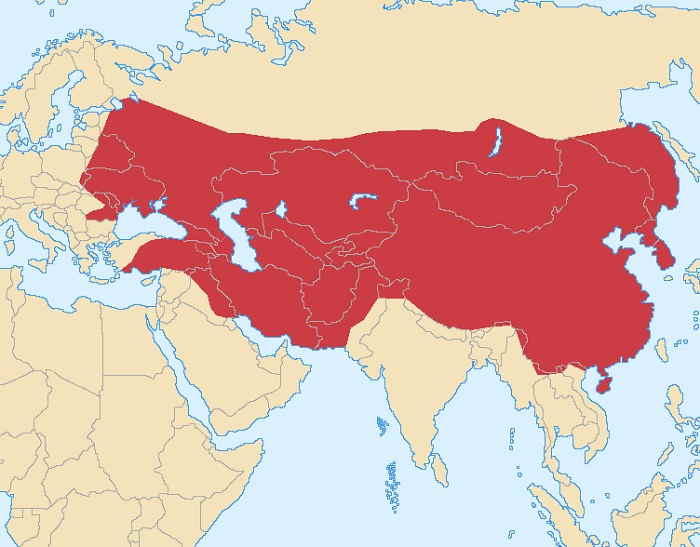
The Mongol Empire was a powerful nomadic empire that existed from 1206 to 1405. Founded by Genghis Khan, the Mongol Empire was the largest contiguous land empire in history, stretching from Eastern Europe to the Pacific Ocean. The Mongol Empire was characterized by its expansive conquests and its ability to quickly adapt to different environments and cultures. At its height, the Mongol Empire stretched from the Pacific Ocean to the Caspian Sea, and from the Arctic Ocean to the Indian Ocean. The Mongols were renowned for their horsemanship and military tactics, which allowed them to conquer cities and territories across Asia and Europe. They were also known for their tolerance and acceptance of different religions, allowing them to create a vast network of trade routes that connected East Asia with Europe and the Middle East.
The Mongol Empire was divided into four khanates, which were led by the descendants of Genghis Khan. These khanates were the Golden Horde in the west, the Ilkhanate in the south, the Chagatai Khanate in the east, and the Great Khanate in the north. The Mongol Empire was also divided into provinces, which were governed by appointed governors and military leaders. In addition to its military conquests, the Mongol Empire was also known for its religious and cultural tolerance. They allowed different religions to practice freely, and adopted aspects of Chinese and Islamic culture. They also promoted trade and commerce, which helped to spread their influence across Eurasia. The Mongol Empire fell in 1405, when the khanates were weakened by civil wars and internal strife. Despite its decline, the Mongol Empire continues to be remembered for its vastness and its lasting impact on Eurasian culture and politics.
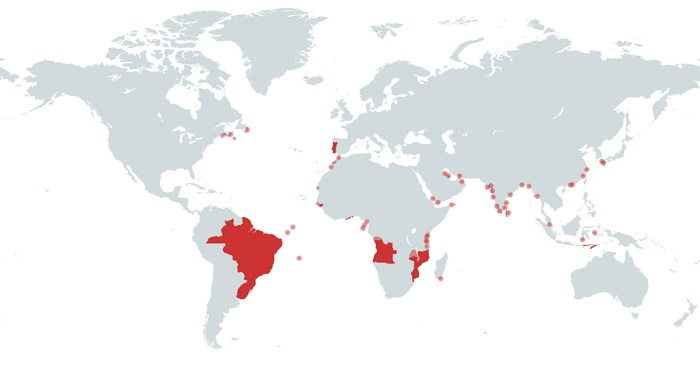
The Portuguese Empire was a major maritime and colonial power that spanned more tha five centuries from the early 15th century to the late 20th century. It was the first global empire in history and one of the longest-lived. At its peak in the 16th and 17th centuries, it was the most powerful and wealthiest nation in the world. The Portuguese Empire was founded in 1415 by the Portuguese explorer, Prince Henry the Navigator. It soon expanded to become the largest empire in the world, stretching from Brazil in the Americas to India in the East, and covering much of Africa, the Middle East, and the Far East. Portuguese explorers were the first Europeans to discover a sea route to India and the East Indies, and they were also the first to circumnavigate the world. The Portuguese Empire was based on a strong naval presence and its colonies were heavily fortified with trading posts and military garrisons. The Portuguese also developed a lucrative trade in slaves, gold, spices, and other commodities.
The Portuguese Empire was essential to the development of the Atlantic slave trade. Slaves were captured from African countries and then shipped to the Americas where they worked as laborers on plantations. This slave trade was hugely profitable for Portugal, and it helped create a huge trading network that stretched from Europe to the Americas and Asia. The Portuguese Empire was eventually weakened by competition from other European powers, and it began to decline in the 18th century. Its colonies were gradually taken over by other European powers, and it ended with the transfer of Macau to China in 1999. . Despite its decline, the Portuguese Empire left a lasting legacy on the world. Its political, economic, and cultural influence can still be seen in many of its former colonies, especially in Latin America. Its legacy can also be seen in the Portuguese language, which is still spoken in many parts of the world.

The Russian Empire was a large state that existed from the mid-17th century to the early 20th century. It was one of the largest and most powerful empires in European and world history, stretching from the Baltic Sea to the Pacific coast of modern-day Alaska. The Empire was ruled by the Romanov Dynasty, and its capital was located in St. Petersburg. The Russian Empire was a multi-ethnic state, with a large number of ethnic groups living within its borders, such as Russians, Ukrainians, Belarusians, Tatars, Jews, and many others. It was a deeply religious society, and the official religion was Orthodox Christianity.
The Russian Empire was a monarchy, and the emperor was the head of state. He was assisted by an appointed prime minister, and the government was divided into several ministries. The economy of the Empire was primarily based on agriculture and industry, with a large reliance on exports. The Russian Empire was a major military power, and its army was one of the largest in the world. Its navy was also a formidable force, and it played a major role in the expansion of the Empire. The Russian Empire was a major cultural center, and its art and literature flourished. The Empire was also a major center of scientific and technological development, producing many notable scientists and inventors. The Russian Empire was overthrown in the Russian Revolution of 1917, and it was replaced by the Soviet Union.
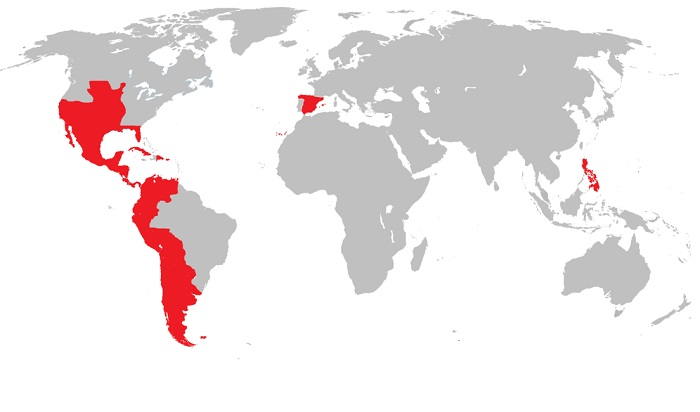
The Spanish Empire was one of the largest and most powerful empires in the world throughout its history. It was established in the late 15th century by the Catholic Monarchs, Isabella I of Castile and Ferdinand II of Aragon, and it grew to include much of the Americas, Europe, and parts of Africa and Asia. The Spanish Empire was one of the first global empires, and it remained an important political, economic, and cultural force for centuries. The Spanish Empire had a variety of different components, including its colonies in the Americas, its trading posts and outposts in Africa and Asia, and its presence in Europe. The Spanish Crown administered its colonies in the Americas through the viceroyalties, while its military and naval forces protected its interests across the globe.
The Spanish Empire was also a major cultural force, and its language, religion, and culture were spread across the world. The Spanish Empire was closely tied to the Catholic Church and its missionaries, who spread the faith and helped to convert the native populations of the colonies. The Catholic Church also provided an ideological and religious justification for the Spanish Empire’s expansion and conquest. The Spanish Empire was also closely tied to the development of the slave trade and the exploitation of the native populations. The Spanish Empire reached the height of its power in the 16th and 17th centuries, but its power began to decline in the 18th century due to a variety of factors, including the rise of other European powers, economic difficulties, and the loss of colonies. By the 19th century, the Spanish Empire had been largely replaced by other European empires. Nevertheless, the legacy of the Spanish Empire continues to be felt around the world today, from its language and culture to its political and economic legacy.
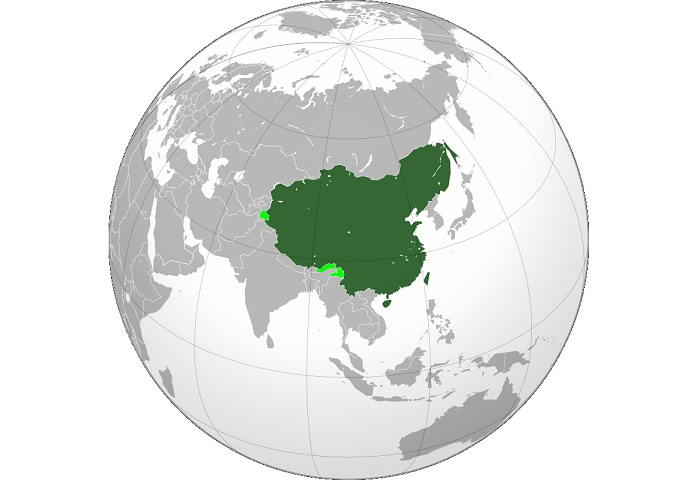
The Qing Dynasty was the last ruling dynasty of China, ruling from 1644 to 1912. It was the second largest dynasty in Chinese history, preceded by the Ming Dynasty. The Qing Dynasty was founded by the Manchu people, a nomadic people from Manchuria. The first emperor of the Qing Dynasty was the Shunzhi Emperor, who ascended to the throne in 1644. The Qing Dynasty was a period of significant economic, political, and social changes in China. During the Qing Dynasty, China saw an era of great advances in technology and infrastructure. The Chinese economy flourished and the population of China grew. The Qing Dynasty also saw the introduction of a number of new and innovative technologies, including the printing press, steel manufacturing, and the telegraph.
During the Qing Dynasty, the Chinese government was highly centralized and the emperor held absolute power. The emperor was responsible for all decisions, both domestic and foreign. However, the Qing Dynasty was also a period of great political and social turmoil. During this period, several rebellions and peasant uprisings occurred, and foreign powers became increasingly involved in Chinese affairs. The Qing Dynasty was also a period of great cultural and artistic achievement in China. During this period, many new schools of thought and literature were created, including Confucianism, Buddhism, and Daoism. The imperial court also sponsored many grand and elaborate festivities and ceremonies, such as the Grand Festival of Spring. The Qing Dynasty ended in 1912 with the overthrow of the last emperor, the Xuantong Emperor. The fall of the Qing Dynasty marked the end of almost three thousand years of imperial rule in China. The end of the Qing Dynasty ushered in a new era of history in China, the Republic of China.
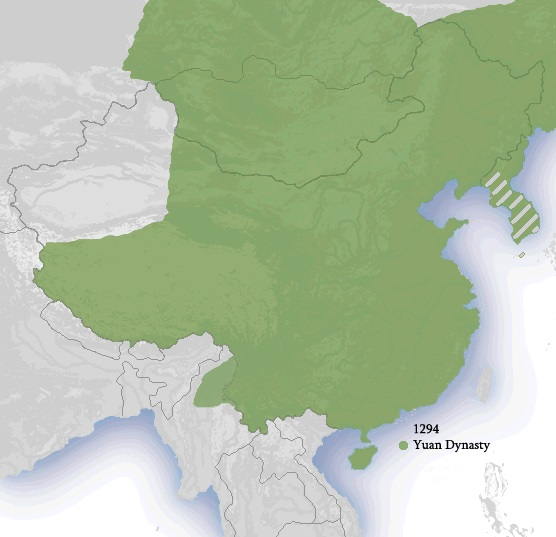
The Yuan Dynasty, founded by the Mongol leader Kublai Khan, was the first foreign dynasty to rule over all of China. It lasted from 1271 to 1368, and was one of the most powerful dynasties in Chinese history. Kublai Khan was a great leader who brought many innovations to the Chinese Empire. He established a strong central government and a new capital at Beijing. He also reformed the taxation system and promoted the development of cities and industry. He encouraged trade between China and other countries, which helped the Chinese economy to flourish. Under Kublai Khan, the Yuan Dynasty adopted many aspects of Mongolian culture, including its language and customs. The Mongolian language was used as the official language of the court, and Mongolian dress was adopted by the emperor and his officials. Kublai Khan also adopted a policy of religious tolerance, allowing people of all faiths to practice their religion freely.
Kublai Khan's successors were not as successful as him. They were unable to maintain the unity and strength of the Yuan Dynasty. Internal rebellions and the rise of the Ming Dynasty in the south weakened the Yuan Dynasty, and it eventually collapsed in 1368. The Yuan Dynasty had a lasting impact on China. The Mongolian language and culture that had been adopted by the dynasty continued to influence Chinese culture for centuries to come. It also had a lasting effect on the economy, as it encouraged trade and the development of cities and industry. The Yuan Dynasty was an important period in Chinese history and had a lasting influence on the country.

The Umayyad Caliphate was a major Islamic caliphate that existed from 661 to 750 CE. It was the first great Muslim dynasty and was based in Damascus, Syria. The Umayyads were descendants of Umayya ibn Abd Shams, a great-grandfather of the Islamic prophet Muhammad. The Umayyad Caliphate was one of the largest empires in history and at its peak, it encompassed a huge area stretching from Central Asia to the Iberian Peninsula. The Umayyad Caliphate was led by the Caliph, the political and religious successor to the Prophet Muhammad. During their rule, the Umayyads expanded their empire and spread Islam to many parts of the world. They also established a number of administrative systems, including the diwan (a financial department) and the shariah (a system of Islamic law). They also introduced the Dinar, a new currency. The Umayyads were great patrons of the arts and science. They commissioned the building of magnificent mosques, palaces and other structures, such as the Dome of the Rock in Jerusalem. They also encouraged scientific advances and established the first universities in Europe, such as the famous University of Cordoba in Spain. The Umayyads were eventually overthrown in 750 by the Abbasid Caliphate. This was due to a number of factors, including internal struggles and revolts in their territories. Despite their downfall, the Umayyads left a lasting legacy and were responsible for many advances in the Islamic world.
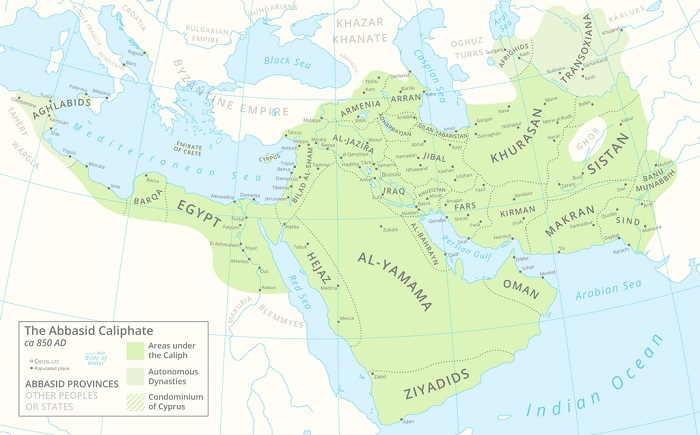
The Abbasid Caliphate was one of the most powerful Islamic dynasties in history. It was founded by the descendants of the Prophet Muhammad’s uncle, Abbas ibn Abd al-Muttalib, in 750 CE. It was based in Baghdad and was the second of the four major Islamic Caliphates. The Abbasid Caliphate was a period of great cultural and scientific advancement. During this time, many advances were made in mathematics, astronomy, engineering, and medicine. The city of Baghdad became a major center of learning and a beacon for the Islamic world. The Abbasid Caliphate was ruled by a caliph, or a political and religious leader. The caliph was the head of state and the supreme religious authority, and he was responsible for maintaining law and order. The Abbasid Caliphate was divided into provinces, each ruled by its own governor. The governors were responsible for collecting taxes, maintaining law and order, and providing protection. The Abbasid Caliphate was also known for its tolerant attitude towards other religions and cultures. Christians, Jews, and Zoroastrians were allowed to practice their faith without persecution. The Abbasid Caliphate reached the height of its power in the 9th century, but it began to decline in the 10th century. The caliphate eventually fell in 1258, when the Mongols sacked Baghdad. The influence of the Abbasid Caliphate can still be seen today in the culture, art, and architecture of the Middle East. The legacy of the Abbasid Caliphate is an important part of the Islamic world’s history and culture.